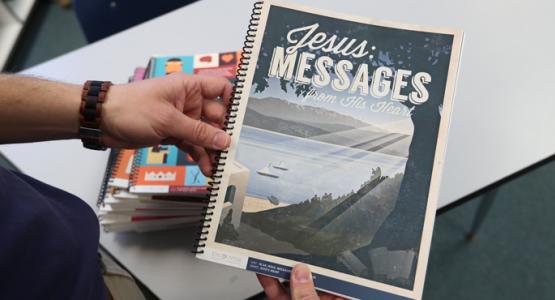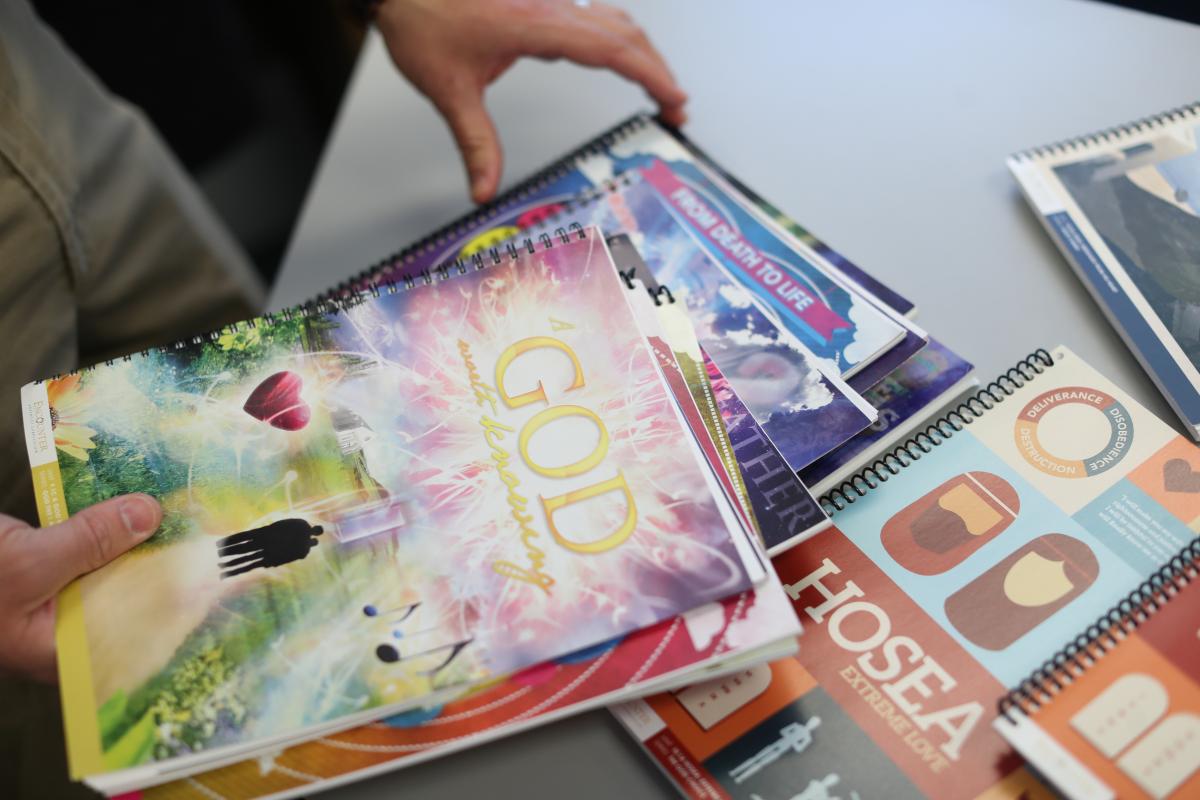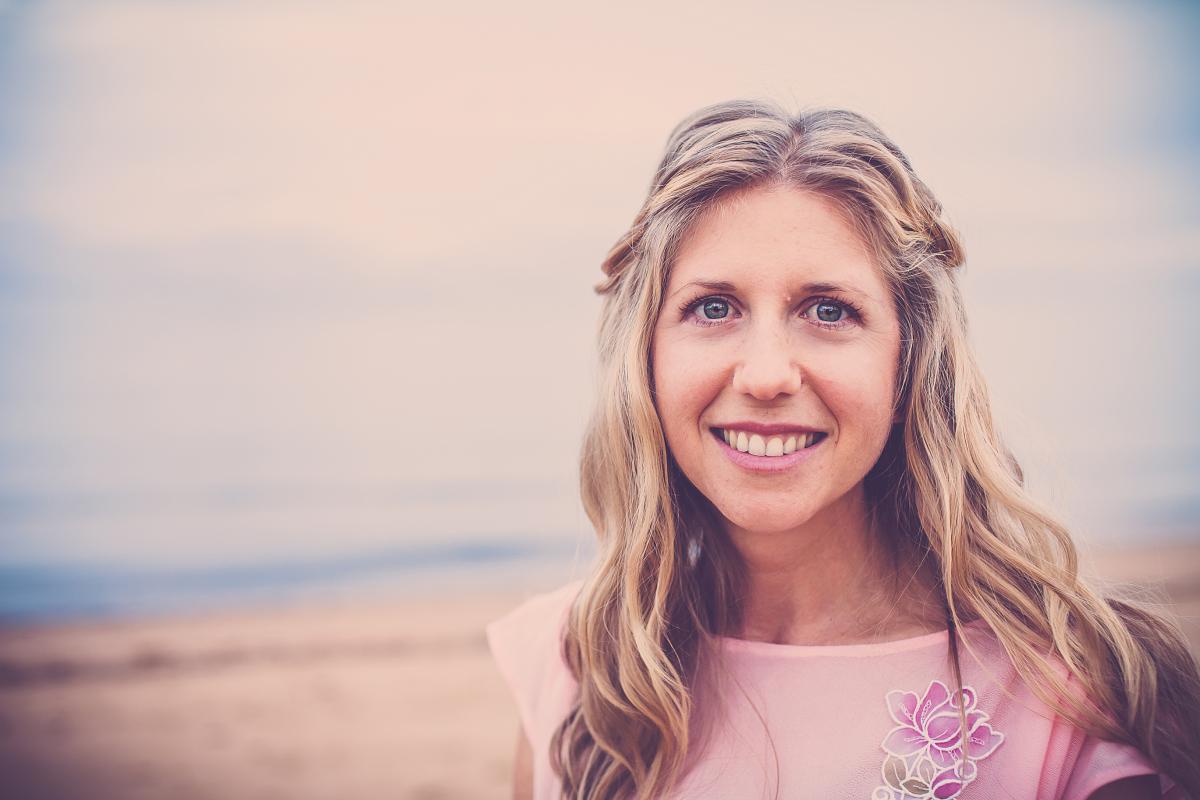
Encounter: Behind the Scenes
We interviewed Nina Atcheson, co-author of the Adventist Encounter curriculum about how the project began. Read the interview below:
Visitor: What prompted you to embark on the journey of writing Encounter originally?
Atcheson: I taught English and Bible in two large Australian Seventh-day Adventist schools before I had children, and saw a need for a curriculum that was based focused on both a relationship with God and founded on Scripture. I was part of a small group of Bible teachers who met a few times each year at the Union office, and we brainstormed and created a few small resources, but it wasn’t until I was pregnant with my second child that Adventist Schools Australia approached me officially about being the main writ er of the secondary Encounter units, and managing rollout for our Australian high schools. I had planned to be a stay-at-home-mom, but after much prayer, felt that God was calling me to serve Him in a way that I couldn’t reject. I worked from home part-time initially, although the role increased in magnitude over the years.
er of the secondary Encounter units, and managing rollout for our Australian high schools. I had planned to be a stay-at-home-mom, but after much prayer, felt that God was calling me to serve Him in a way that I couldn’t reject. I worked from home part-time initially, although the role increased in magnitude over the years.
 er of the secondary Encounter units, and managing rollout for our Australian high schools. I had planned to be a stay-at-home-mom, but after much prayer, felt that God was calling me to serve Him in a way that I couldn’t reject. I worked from home part-time initially, although the role increased in magnitude over the years.
er of the secondary Encounter units, and managing rollout for our Australian high schools. I had planned to be a stay-at-home-mom, but after much prayer, felt that God was calling me to serve Him in a way that I couldn’t reject. I worked from home part-time initially, although the role increased in magnitude over the years.And so, eight years ago in 2008, a small team of writers from Australia and New Zealand, combined their efforts and began working on developing new teaching units for the Adventist Encounter Curriculum (Bible) for Kindergarten through Grade 10. At that stage (2008), most teachers were either using the South Pacific Division Bible curriculum that had been developed in the mid-1980s or were creating their own materials to meet the needs of their millennial students. The large percentage of non-SDAs in our Adventist schools “Down Under” (up to 95 percent) also meant that it was time to reassess the needs of our changing clientele and consider how we could witness and share Jesus and the Seventh-day Adventist message with our students and their families in a meaningful way.
One of our first decisions was that the Bible itself should be the textbook in Bible class. Knowing that “the subject of Christ’s teaching and preaching was the word of God” and that Christ “taught that the word of God was to be understood by all. He pointed to the Scriptures as of unquestionable authority, and we should do the same” (Christ’s Object Lessons, p. 21) confirmed this decision. The Bible can reach to the depths of the human soul (Hebrews 4:12); it can draw us to the heart of the God of the universe and show us how to live a life of meaning with Him. Why should it not be our textbook for Bible class—and life?
I love the advice from Inspiration, that “the teaching of the Bible should have our freshest thought, our best methods, and our most earnest effort” (Education, p. 186). She also wrote: “Our thoughts on education take too narrow a view. There is need of a broader scope, a higher aim…. Higher than the highest human thought can reach is God’s ideal for His children” (p. 13).
Visitor: To what extent could concerns about the number of young adults leaving the Adventist church be addressed by exposure to the Encounter curriculum in formative years?
Atcheson: The E ncounter Curriculum shows students how to use the Bible to answer life’s big questions, but most importantly, it seeks to introduce students to the King of the universe so that they know Him for themselves (and so that they can share the Adventist message with others, and serve with conviction). ValueGenesis showed that the “climate” of our churches/schools has a great impact on our teenagers, and the curriculum seeks to embrace students despite their knowledge base, walk with God, or background – so that students can think for themselves, ask questions in a safe environment where they can be guided to the Bible as the source of truth, and where relationships are built (between students/teacher/God). Hopefully, as a result of the warm environment that Encounter encourages, the culture of our schools can provide places where students know that they belong – in a church they wouldn’t want to leave.
ncounter Curriculum shows students how to use the Bible to answer life’s big questions, but most importantly, it seeks to introduce students to the King of the universe so that they know Him for themselves (and so that they can share the Adventist message with others, and serve with conviction). ValueGenesis showed that the “climate” of our churches/schools has a great impact on our teenagers, and the curriculum seeks to embrace students despite their knowledge base, walk with God, or background – so that students can think for themselves, ask questions in a safe environment where they can be guided to the Bible as the source of truth, and where relationships are built (between students/teacher/God). Hopefully, as a result of the warm environment that Encounter encourages, the culture of our schools can provide places where students know that they belong – in a church they wouldn’t want to leave.
 ncounter Curriculum shows students how to use the Bible to answer life’s big questions, but most importantly, it seeks to introduce students to the King of the universe so that they know Him for themselves (and so that they can share the Adventist message with others, and serve with conviction). ValueGenesis showed that the “climate” of our churches/schools has a great impact on our teenagers, and the curriculum seeks to embrace students despite their knowledge base, walk with God, or background – so that students can think for themselves, ask questions in a safe environment where they can be guided to the Bible as the source of truth, and where relationships are built (between students/teacher/God). Hopefully, as a result of the warm environment that Encounter encourages, the culture of our schools can provide places where students know that they belong – in a church they wouldn’t want to leave.
ncounter Curriculum shows students how to use the Bible to answer life’s big questions, but most importantly, it seeks to introduce students to the King of the universe so that they know Him for themselves (and so that they can share the Adventist message with others, and serve with conviction). ValueGenesis showed that the “climate” of our churches/schools has a great impact on our teenagers, and the curriculum seeks to embrace students despite their knowledge base, walk with God, or background – so that students can think for themselves, ask questions in a safe environment where they can be guided to the Bible as the source of truth, and where relationships are built (between students/teacher/God). Hopefully, as a result of the warm environment that Encounter encourages, the culture of our schools can provide places where students know that they belong – in a church they wouldn’t want to leave.Visitor: What feedback have you heard from students concerning their use of the Encounter curriculum?
Atcheson: Since its initial development in 2008, Encounter has been used in more than 100 schools in Australia and New Zealand and has been well received by both teachers and students. As we have rolled the curriculum out in high schools across the NAD, feedback has been overwhelmingly positive. Here are a few direct comments from students and teachers in the NAD:
“Just yesterday my students were saying how much they enjoy this curriculum. One student said he feels at peace entering the classroom – no panic that he forgot to do something. He knows God will be the focus, and this gives him a chance to deepen that relationship and not get lost in ‘busy work’ but focus on who God is and why He matters in his life.” – Lori Anderson Holm, Bible teacher, Loma Linda Academy.
“My students did a student-led evangelism meeting on the book of Revelation. Many of the parents remarked that it was the most positive and Christ-focused Revelation meeting they had been to. I have appreciated the strong emphasis on Christ’s characteristics and ministry in heaven and the assurance that God’s people will be cared for during the trials of the end. That clearly rubbed off on my students, and ultimately the people they witnessed to.” – Ben Kreiter, Bible teacher, Forest Lake Academy.
“I enjoy how hands-on the class is because we have lots of opportunity to connect with each other rather than only listening to lectures or doing in-class assignments. This curriculum really challenges me to be honest with myself about my relationship with God and helps me to look at our Creator outside of the box I usually put Him in.” – ninth-grade student.
“It’s relaxed but not easy. I come to school looking forward to Bible class because it’s fun and not stressful, but it’s also deep. I’ve explored my beliefs a lot more this year. It’s really made me think and grow. This curriculum is God smart, not just book smart.” – ninth-grade student.

Add new comment